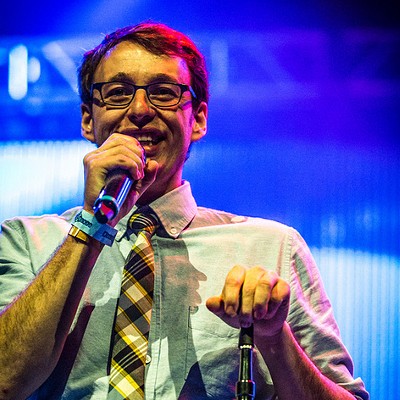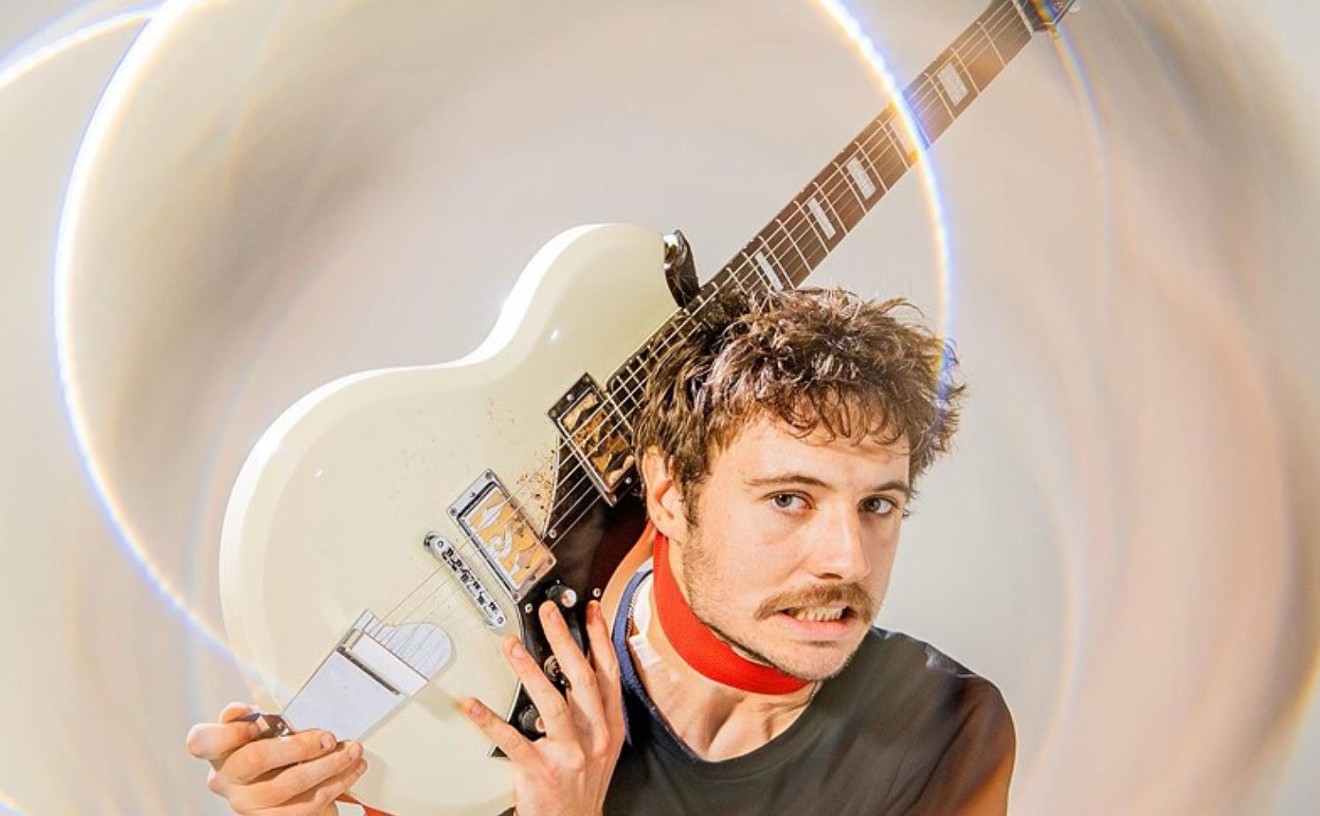The two cities aren't bad for comparison's sake. The population of the city of Denver is a little over 634,000 people, with 2.6 million in the metropolitan area. Austin has some 842,000 people within the city limits and 1.8 million in the metro area.
To make the case, we asked Westword clubs editor Jon Solomon, who has spent countless hours entering every single show in town into our concert calendar, to count Denver's live-music venues using the following criteria: "These are all the venues that I, someone who writes about music for a living, will frequent in an effort to see original music, be it local or via a touring act."
See also: Governor Hickenlooper on why (and how) he wants to support Colorado music
Westword's media equivalent in Texas's state capital is the Austin Chronicle, which also employs someone to document this. His name is Chase Hoffberger, and we presented him with the exact same request.
Hoffberger's tally for live-music venues in Austin was 82. Solomon's was 98 for Denver. There's more. Pollstar is a California-based trade publication that tracks concerts around the country. Its listings for Denver, though admittedly incomplete and clearly prone to unfairly rewarding bigger promotional entities, include shows at every kind of venue, from the 1up to the Walnut Room to the Pepsi Center. From now until the end of the year, it lists 668 concerts planned for the Denver metropolitan area and 555 for Austin and its environs. So there's your proof: Denver has more live-music venues than Austin, and it hosts more shows.
It's a surprising outcome — Austin's official motto is "The Live Music Capital of the World" — though apparently one that Hickenlooper was right about all along. But what's more interesting is that a high-ranking elected official would bother to say it. In Hickenlooper's case, the passion is personal. "I try to go to concerts whenever I can, just because I love music," he told us recently. He sees a commitment to music in his role as a public servant, as well.
"It also helps people to live here — especially young people, but everybody — if they believe in their city and believe in their state," he said. "If people think that Colorado is a beacon for artists and creative people who are really talented, I think they're going to be a little happier during the day, and I think they're going to be a little more successful at their job, no matter what their job is."
Music has a demonstrable economic impact on a city. The governor pointed out that several billion dollars move through Denver in the form of concert tickets, spending at venues, salaries for employees there, and payments to musicians, among other things.
The context of Hickenlooper's claims about Denver's live-music scene over the years were often in answer to questions about the overall health of the city and as part of an effort to entice people to come to Colorado, whether as tourists, transplants or (best of all, from an economic standpoint) with an entire company as it moves to the shadow of the Rocky Mountains. "I think my role is to celebrate [music]," he said.
So his optimism about the music scene here is partly a public-relations campaign. That's also why a city might seize an opportunity to make "Live Music Capital of the World" its official motto. And rhetoric can be powerful. If a company moves its headquarters to Denver because it believes that its young employees will be happy here, and part of the reason it believes that is that the governor told them it was true, then one simple sentence — "Denver has more live-music venues than Austin" — has had an impact that can be measured in unmistakable terms. That's true regardless of Hickenlooper's motivations (initially just that he's a music fan) and whether that was his sole intent in saying it (probably not).Still, live-music fans in Austin shouldn't necessarily pack their bags and head northwest. Even if you believe that the number of live-music venues is the best indication of the health of a music scene (and it definitely isn't), there are plenty of ways to poke holes in the logic that led to both the governor's numbers and our own.
For example, we included Denver's suburbs (cities that lay claim to spaces like the Gothic Theatre, the 1STBANK Center and, of course, Red Rocks). That seems like a fair assessment. I challenge a newcomer to drive from Denver to Englewood and spot the change by any measure other than the sign. Austin is much more sprawling than Denver: 272 square miles to our 154. And, in fact, that particular caveat makes little difference: If you take all the venues outside the city limits out of our count, you still get 84, which is two more than Austin.
There are others ways of counting, though, that yield different results. In the lead paragraph on its website, the Austin Department of Tourism boasts that there are "more than 250" music venues there. The Mile High City's equivalent organization, Visit Denver, didn't have a number handy, but a staffer there recalled looking into the matter recently and coming up with the exact same figure: more than 250.
The website Yelp suggests that Austin has more as well: While there are 752 Denver "Arts & Entertainment" locations reviewed on the site, there are 786 in Austin. To be fair, that includes everything from arcades to opera houses. But therein lies the difficulty: The definition of a live-music venue is a challenging one. If a wine bar hosts a singer-songwriter once a month, is it a music venue? A park with a summer concert series? What about a sports bar with a karaoke night? Similar problems plague anyone trying to count the total number of concerts in a city. Does the show in someone's basement count? The performance at a rally on the steps of the State Capitol?
The exact definitions probably don't matter a ton, because the number of live-music venues and even the number of shows are only one small part of what makes a place hospitable to both musicians and music fans.
Denver and Austin are among a somewhat rare breed of American city in that they made the effort to document and support their music scenes at all. Both have done studies on the subject: WESTAF's Creative Vitality Index (CVI) Report in Denver and Austin Music People's (AMP) White Paper. It's important to note that the two reports are generated by very different organizations. WESTAF is a Denver-based nonprofit whose stated goal is the "creative advancement and preservation of arts" in the western United States. Austin Music People is a coalition of that city's music interests and was founded by three of Austin's most prominent talent buyers; it lists musicians, venue owners and media members on its board of directors.WESTAF is expressly trying to be diagnostic in its CVI. It aims to provide civic and community leaders with the ammunition to describe the impact of the arts. AMP's report is designed to be prognostic. It explores the changes in the music landscape generally and suggests ways that Austin can adapt, and it looks at the challenges musicians face and advocates for specific fixes. That may speak to the state of public perception about the music scene in both cities: In Denver, the first priority is making sure people know how vital the scene is, while people in Austin already recognize that.
It's not that Denver's efforts have resulted in nothing but words and charts. WESTAF, alongside the Denver Office of Cultural Affairs, established the Denver Music Summit, designed to offer education for those in the music industry and the general population alike. And WESTAF has also given touring grants to Denver bands. Governor Hickenlooper pointed out that the Scientific and Cultural Facilities District raises millions and millions of dollars every year to fund arts organizations and businesses. "We try to make sure that there's a cultural economy," he said.
But it's hard to read Austin's White Paper and conclude that Denver has supported its musicians as well as Austin has. AMP has worked with the Austin City Council to create music-friendly policy on everything from sound ordinances to loading zones outside venues. And that isn't the only organization designed to support musicians there. Health Alliance for Austin Musicians has been subsidizing everything from medical insurance to mental-health counseling for artists since 2005. In 2012, WESTAF reported a higher CVI score for Austin than for Denver.
As music-loving cities go, Denver still has plenty to learn from Austin. It's something for us to talk about between sets at shows in the coming years. By any measure, there will be plenty of opportunity to do just that.
• BACKBEAT'S GREATEST HITS • - The fifty best rap lyrics of all time - The ten biggest concert buzzkills - Five more concert buzzkills - From Phish to Floyd, the ten best light shows
Follow











